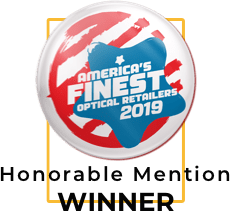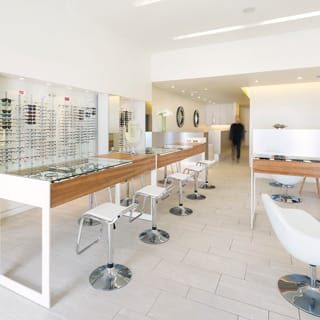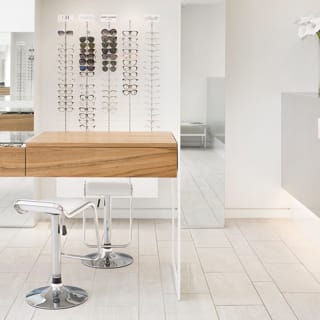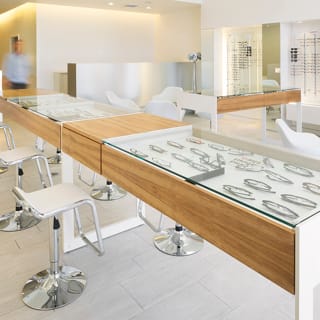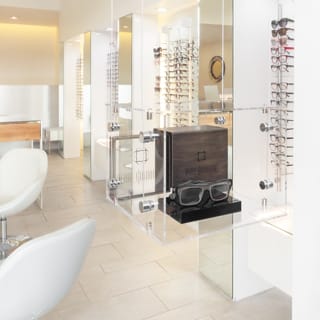Myopia, also known as nearsightedness, is a common refractive error that often develops in childhood, requiring prescription eyeglasses to see clearly. Unfortunately, it cannot be reversed or cured, but there are several effective treatment options to slow or stop its progression.
Although myopia often develops in children and youth, it can develop at any age and continue to worsen until an individual reaches their mid-20s. You might think that nearsightedness is just a matter of needing a stronger eyeglass prescription, but research shows that high myopia increases the risk of developing other sight-threatening conditions later in life.
What Is Myopia?
Myopia is an extremely common refractive error, visual blur caused by the natural shape and length of the eye, which has been on the rise over the last several decades. Researchers estimate that by 2050, half of the world’s population will be affected by myopia. The main symptom of myopia is blurry distance vision, while your ability to see up close remains unaffected.
Additionally, research indicates that high myopia (severe nearsightedness) increases the risk of developing other sight-threatening conditions like myopic maculopathy, retinal detachment, glaucoma, and cataracts.
Causes of Myopia
Several factors can contribute to myopia, making it a refractive error. The physical shape of the eye, when too long and causing light to be focused short of reaching the back of the eye, is one cause. The curvature of the cornea, the front surface of the eye, as well as the shape of the crystalline lens, situated just behind the cornea, may also cause light to be focused too far in front of the back of the eye.
Can Myopia Be Reversed or Cured?
Unfortunately, myopia cannot be reversed or cured. There is also no guaranteed way to prevent myopia, either. However, some research suggests that daylight exposure and limiting the amount of sustained close work can lessen the risk of developing myopia.
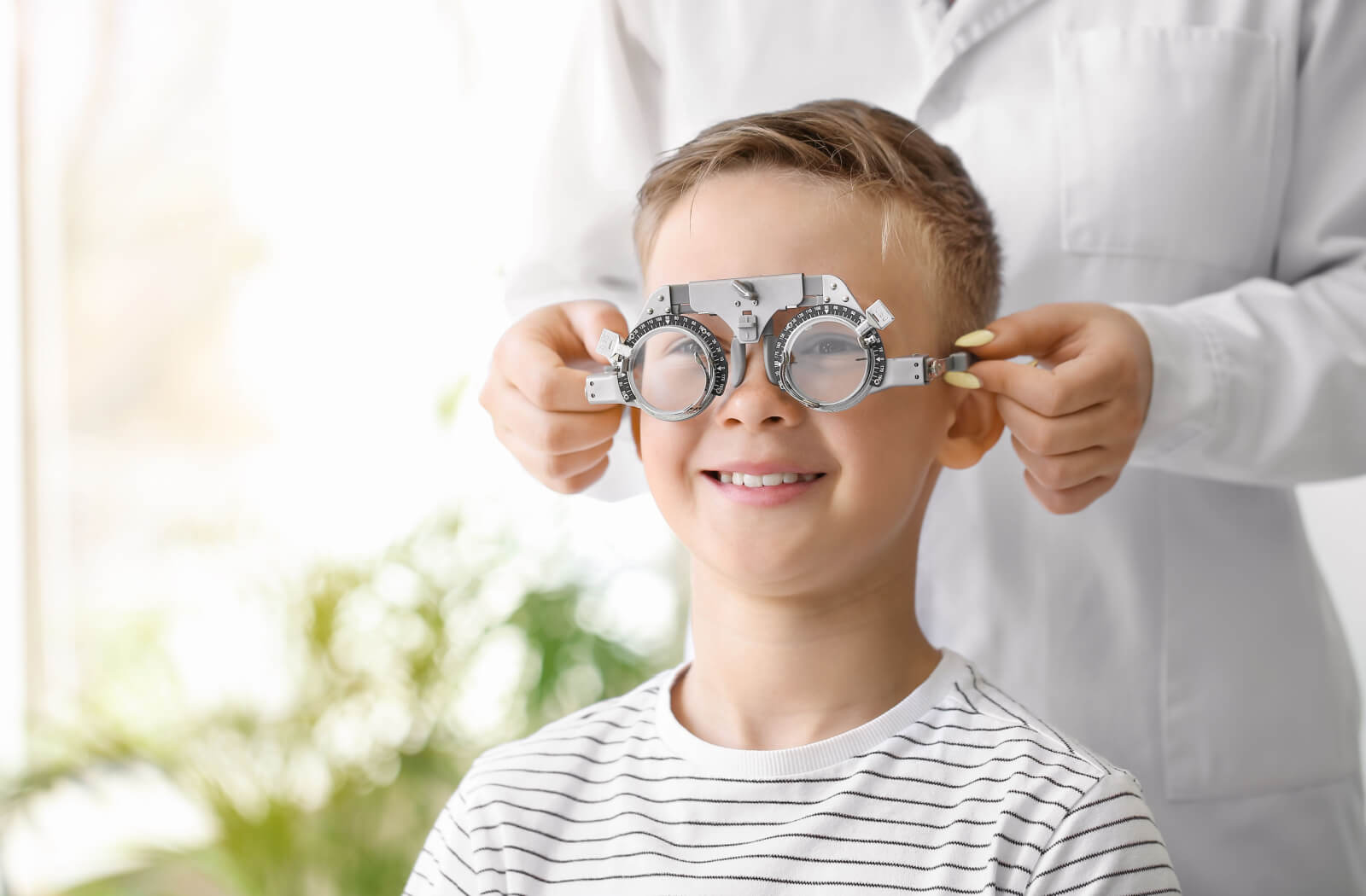
There isn’t a single “best” myopia management approach to slow the progression of myopia. Ultimately, it comes down to the individual’s lifestyle and vision needs. Age could also be a factor because myopia often develops in children. A very young child, for example, may not be able to responsibly wear contact lenses to slow myopia, making prescription eyeglasses a better fit.
Myopia Management
Eyeglasses
Specially prescribed eyeglasses are a common option chosen by eye doctors to slow myopia progression because they are safe and effective, while allowing your child to see clearly. Regular prescription eyeglasses can also help your child see clearly with other common refractive errors like hyperopia (farsightedness) and astigmatism (football-shaped eye) but, in contrast, have no effect on slowing them down.
Various types of multifocal lenses can be used for myopia management, although specific lens designs have been shown to be more effective than others.
Contact Lenses
If your child is old enough to wear contact lenses, there are a couple of potential options for soft contact lenses available.
MiSight 1-Day dual-focus therapeutic lenses are probably the best option to slow myopia progression by up to 59%. Plus, being daily disposable lenses, they reduce the risk of rare contact lens-related complications like eye infections.
Before these lenses became available, another potential contact lens option for your child was a multifocal contact lens. During a 3-year study, the research demonstrated that multifocal contact lenses slowed myopia progression by around 43% compared to a single-vision contact lens.
Orthokeratology
Orthokeratology, or ortho-K for short, may be an option for some kids. Ortho-K uses special semi-rigid therapeutic contact lenses to gently reshape the cornea overnight, often slowing myopia progression by around 50%. The reshaping lasts throughout the day after wearing the lenses overnight, so your child may not need glasses or other corrective lenses during the day to see clearly.
Atropine Eye Drops
You may be familiar with atropine eye drops, which are often used during a diabetic eye exam to dilate the pupil, so that your eye doctor can get a better view of the inside of your eyes. Low-dose atropine eye drops are also a treatment for myopia management.
The exact way that low-atropine slows myopia progression is still being studied despite its common use, due to its effectiveness and good safety profile. Some researchers believe that it may be related to a mechanism that alters retinal neurotransmission. Other evidence suggests that it could inhibit eye growth by a mechanism related to increased choroidal thickening.
Regardless of exactly how atropine works, it is generally accepted to be similarly as effective as other methods, such as contact lenses, eyeglasses, and ortho-K.
Refractive Eye Surgery
There are several refractive eye surgery options available, such as LASIK, SMILE, and PRK, each of which has its own advantages and disadvantages. Not everyone is a candidate for all of these procedures and must be at least 18 years-old with a stable prescription for a couple of years before proceeding. That said, these surgical procedures can help to correct myopia and other refractive errors like hyperopia and astigmatism, but they play absolutely no role in slowing down myopia progression.
In a laser eye surgery consultation, your eye doctor can work with you to determine which procedure is the most appropriate for your particular situation.
Discuss Myopia Management Options with Your Eye Doctor
There isn’t a one-size-fits-all answer to managing or correcting myopia. Each individual’s vision and eye health needs are unique, and what works well for one child may not work for another. Your eye doctor will provide advice on recommended treatment options for your family. Give us a call or book an appointment online at Eye Love Optometry to discuss myopia management options in more detail.

